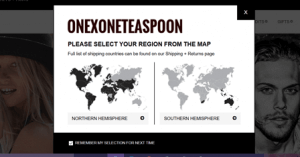The Asia-Pacific business market represents one of the largest, and most densely populated geographic regions on earth. Sellers and business owners who choose to operate in this commercial zone often do so because consumer markets are huge, economies in the Pacific Rim area are enjoying a growth spurt, and digital business models mean sellers need to deliver goods to buyers in every country of the world. However, for companies who have never done business in Asia, let alone the Pacific Rim markets, it’s essential to keep several key facts in mind.
Step one for any successful enterprise is to define markets. After that, it’s up to entrepreneurs to choose among several other priorities, including dealing with language barriers, doing smart logistics planning, respecting local cultural norms, not relying on one-nation markets, and remembering to network even before launching an Asia-Pacific based business enterprise. Here are several guidelines that can help owners and entrepreneurs get the most out of their profit-seeking ventures.
Define Your Markets
The Asia-Pacific economic zone includes dozens of nations and cultures, each with its own population centers, product preferences, laws, customs, and ways of dealing with new merchants. It’s imperative to define, both geographically and otherwise, your target markets if you decide to operate a for-profit entity in the area. Taking too broad a reach will quickly spread resources thin and leave you with nothing but frustration to show for your efforts. Begin by defining your ideal customer by age, product preferences, and specific location.
Optimize Fleet Management
Nowhere is high-quality fleet management more important than in densely populated, geographically spread-out environments. The entire Asian business zone of the Pacific Rim fits that description perfectly. That’s why managers need to review a guide on the latest developments in safety tech for vehicle fleets, primarily those related to collision avoidance systems for in route transport.
Most of the central urban areas in Asian-Pacific markets include streets and highway routes that are busy and congested for many hours per day. So, even off-peak trips run into their share of bumper-to-bumper slowdowns and dangerous situations of all kinds. Collision avoidance tech is the newest tool managers have at their disposal to minimize accidents and make sure that drivers are safe while moving goods from Point A to Point B.
Bridge the Language Barrier
The majority of corporations that operate anywhere in Asia attempt to hire local workers for offices, as drivers, and for all but upper management roles. Unlike many other large commercial zones, Asian business regions often include consumer groups that speak several different languages. It’s impossible for outsiders to enter these economic corridors unless they use local staff. In places as far apart as Taiwan, Japan, South Korea, Malaysia, and the Philippines, merchants must navigate at least a half-dozen major languages and many more regional dialects. Fortunately, most of the region’s economies are sturdy enough to offer plenty of qualified local help.
Don’t Skimp on Logistics Planning
Anywhere in Asia, logistics planning is a vital component of corporate success. Not only does the area encompass some of the world’s largest urban centers, but street systems, geography, and transportation laws are wildly different from place to place. Wherever you end up paying your trade in the Asian-Pacific sector, spend more time on logistics planning than usual. Anticipate erratic traffic patterns, shipping delays, political factors that play a role in transport, and other potential challenges that are unique to this part of the world. And don’t ignore weather, because Pacific storms appear with short notice and have the potential to interrupt shipping lanes for days on end.
Respect Local Cultures
Familiarize yourself with local religious, cultural, national, and other customs before writing a business plan. The variety of Asian markets is one of its hallmarks, so it’s essential to spend time learning about the places where you’ll be offering your goods and services to local consumers. As the world heads towards a severe talent crunch, be sure that you are using globalization practices, including hiring individuals with an understanding of the culture in which your business operates.
Invest in Networking
It’s important to network before entering any new market, but Asia’s most sought-after urban centers present unique opportunities and problems for newcomers. Spend up to a year ahead of your local launch getting to know vendors, local employment agents, relevant public officials, legal experts, chamber of commerce representatives, and anyone else who might be able to assist your company with a smooth landing in a new, complex marketplace.

Recognising excellence across the Asian Pacific.
Nominate now ➜
Read the latest and past issues of APAC Insider.
Explore issues ➜
Find out how we can help your business grow.
Find out more ➜




















